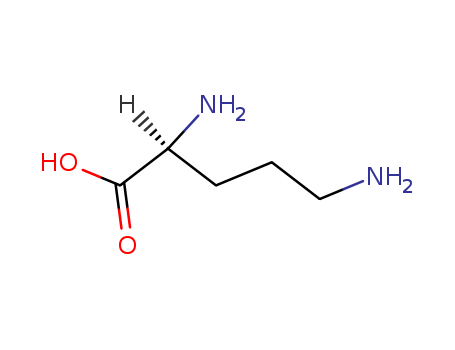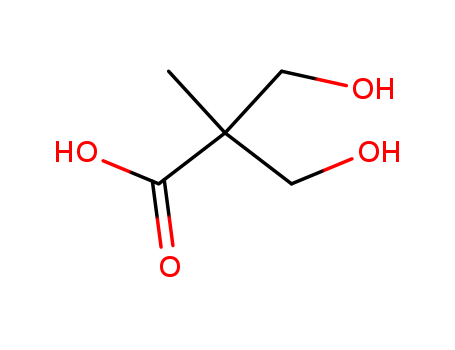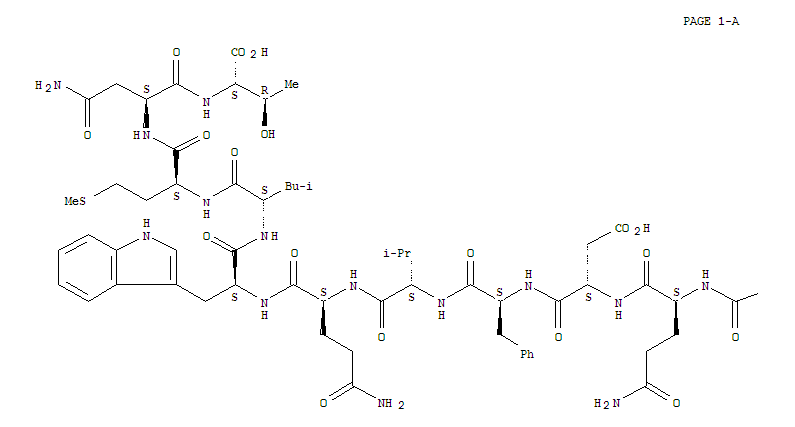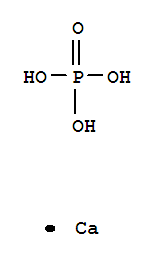|
Preparation
|
Thaumatin I and II proteins can be produced recombinantly in a wide range of hosts, including microorganisms such as bacteria and yeast, and in GM plants to enhance the organoleptic properties.
|
|
Production Methods
|
Thaumatin is a naturally occurring intense sweetener isolated from the fruit of the African plant Thaumatococcus daniellii (Benth). Commercially, thaumatin is produced by aqueous extraction under reduced pH conditions followed by other physical processes such as reverse osmosis.
|
|
Health Hazard
|
Thaumatin is the only natural high-intensity sweetener, and products containing it do not require to be labelled 'artificially sweetened'. It has a low calorific value and is non-cariogenic (Higginbotham, 1986). The report of the Joint F AOfWHO Expert Committee (1987) recorded no mutagenic, teratogenic or allergenic effects of thaumatin, and concluded that the lack of toxicity, together with its ready digestion to normal food components, indicated that its only dietary effect was to make an insignificant contribution to the normal protein intake.
|
|
Pharmaceutical Applications
|
Thaumatin is a naturally occurring intense sweetening agent approximately 2000–3000 times as sweet as sucrose. It has a delayed-onset taste profile and long (up to one hour) licorice-like aftertaste. It is used extensively in food applications as a sweetening agent and flavor enhancer, and has potential for use in pharmaceutical applications such as oral suspensions. The typical level used in foods is 0.5–3 ppm, although higher levels are used in certain applications such as chewing gum. Synergistic effects with other intense sweeteners such as acesulfame K and saccharin occur. The extensive disulfide crosslinking within thaumatin maintains the tertiary structure of the polypeptide: cleavage of just one disulfide bridge has been shown to result in the loss of the sweet taste of thaumatin.
|
|
Safety
|
Thaumatin is accepted for use in food products either as a sweetener or as a flavor modifier in a number of areas including Europe and Australia. It is also used in oral hygiene products such as mouthwashes and toothpastes, and has been proposed for use in oral pharmaceutical formulations. Thaumatin is generally regarded as a relatively nontoxic and nonirritant material when used as an excipient. In Europe, because of its lack of toxicity, an ADI has been set of ‘not specified’. LD50 (mouse, oral): >20 g/kg LD50 (rat, oral): >20 g/kg
|
|
Regulatory Status
|
GRAS listed. Accepted for use as a food additive in Europe. Included in nonparenteral medicines licensed in the UK.
|
|
Regulations
|
Thaumatin has been permitted as a natural food in Japan since June 1979. It was awarded GRAS status for use in chewing gum in the USA in October 1984 and, in the UK, was permitted for use in foods, drinks and dietary products, excluding baby foods, by the Sweeteners in Foods Regulations in 1983. The Joint F AOjWHO Expert Committee declared an ADI 'not specified' for thaumatin in 1985 (Joint F AOjWHO, 1987). Approval has also been gained in many countries world wide for use of thaumatin as a sweetener and flavour enhancer, particularly in chewing gum. These include Australia, Belgium, Spain, Switzerland, Mexico and Denmark (Higginbotham, 1986).
|
|
Physical properties
|
Thaumatin occurs as a pale-brown colored, odorless, hygroscopic powder with an intensely sweet taste. Also see Thaumatin b-recombinant.
|
|
Application
|
Thaumatin is a flavor enhancer that is a protein which is approxi- mately 3,000 times as sweet as sucrose. the onset of sweetness may take several seconds and can be affected by heat. It is a potential low-calorie sweetener that used in chewing gum.
|
|
Who Evaluation
|
Evaluation year: 1985
|
 English
English 中文
中文
 English
Japanese
Russian
Korean
गोंगेन हें नांव
Deutsch
Corsu
Guarani
Hausa
Cymraeg
Nederlands
Aymara
Français
Kreyòl ayisyen
čeština
ʻŌlelo Hawaiʻi
डोग्रिड ने दी
ภาษาไทย
հայերեն
فارسی
Hmoob
ދިވެހި
भोजपुरी
繁體中文
Türkçe
हिंदी
беларускі
български
tur
Gaeilge
ગુજરાતી
Magyar
Eesti keel
بالعربية
বাংলা
Azərbaycan
Português
Suid-Afrikaanse Dutch taal
کوردی-سۆرانی
Ελληνικά
español
Frysk
dansk
አማርኛ
Bamanankan
euskara
Italiano
Tiếng Việt
অসমীয়া
català
Suomalainen
Eʋegbe
Hrvatski
Cebuano
Gàidhlig na h-Alba
bosanski
galego
English
Japanese
Russian
Korean
गोंगेन हें नांव
Deutsch
Corsu
Guarani
Hausa
Cymraeg
Nederlands
Aymara
Français
Kreyòl ayisyen
čeština
ʻŌlelo Hawaiʻi
डोग्रिड ने दी
ภาษาไทย
հայերեն
فارسی
Hmoob
ދިވެހި
भोजपुरी
繁體中文
Türkçe
हिंदी
беларускі
български
tur
Gaeilge
ગુજરાતી
Magyar
Eesti keel
بالعربية
বাংলা
Azərbaycan
Português
Suid-Afrikaanse Dutch taal
کوردی-سۆرانی
Ελληνικά
español
Frysk
dansk
አማርኛ
Bamanankan
euskara
Italiano
Tiếng Việt
অসমীয়া
català
Suomalainen
Eʋegbe
Hrvatski
Cebuano
Gàidhlig na h-Alba
bosanski
galego









